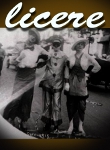The Biodanza and the Building of Lifestyles
DOI:
https://doi.org/10.35699/1981-3171.2011.779Keywords:
Life Style, Leisure Activities, DancingAbstract
This article investigates how the experience of Biodanza integrative affect the lifestyle of a study group of Biodanza, located in Natal, aiming to seek to understand what is Biodanza experience for participants, while reflecting on the significant changes in life participants' experiences from the integration. The contribution to the field of Physical Education is the ability to contribute to the few studies addressing the Biodanza, an experience that nurture self-awareness, a sensitivity of body-subject. This is a research-type field study of qualitative nature, and the instrument used a questionnaire with open questions for each of the individual participants (including the facilitator) and a questionnaire specific to only the facilitator. Based on the above proposed objectives and questionnaires were prepared four items, the characterization of groups, socio-economic group investigated the significance and contribution of Biodanza Biodanza in the lifestyles of the group investigated, for reflection and discussion of results. It was found that the Biodanza, change the lifestyles of the participants in a subtle and significant, leading active lifestyles, dynamic, relaxing, holistic, sensitive, meeting of a Physical Education fleeing models for the body to health, but seeks to reconstruct the identity of human beings in society.
References
CARVALHO, Y. M. O mito da atividade física e saúde. São Paulo: Hucitec, 1995.
CASTRO, Ana Lucia. Culto ao Corpo e sociedade: mídia, estilos de vida e cultura de consumo. São Paulo: Annablume; FAPESP, 2003.
GARAUDY, Roger. Dançar a vida. 4. ed. Rio de Janeiro: Nova Fronteira, 1980. GIL, A. C. Métodos e técnicas de pesquisa social. 5. ed. São Paulo: Atlas, 2006.
GÓIS, C. W. de L. e RIBEIRO, K. G. Biodança, saúde e qualidade de vida: uma perspectiva integral do organismo. Revista Pensamento Biocêntrico, Pelotas, n.10 jul/dez 2008. Disponível em: <http://www.pensamentobiocentrico.com.br/content/edicoes/revista-10-03.pdf>. Acesso em: 27 fev. 2011.
JATOBÁ, V. e FRANCO, L. W. Análise reflexiva do corpo cultural. Revista Digital Lecturas: E.F. y Deportes, Buenos Aires, n. 109, v.12, junio de 2007. Disponível em:< http://www.efdeportes.com/efd109/analise-reflexiva-do-corpo-cultural.htm>. Acesso em: 29 maio 2010.
LE BRETON, D.. Adeus ao corpo: Antropologia e sociedade. 3. ed. Campinas: Papirus, 2008. Disponível em:< http://books.google.com.br/books?hl=pt- BR&lr=lang_pt&id=tuop9RFGnN4C&oi=fnd&pg=PA9&dq=sociologia+do+corpo,+Le+Breton&ots=n9DeV3fxno&sig=ONTJo8c9REhkBR5J4M91xApjW5o#v=onepage&q
=sociologia%20do%20corpo%2C%20Le%20Breton&f=false>. Acesso em: 28 maio 2010.
________. A sociologia do corpo. Tradução de Sonia M. S. Fuhrmann. 3. ed. Petrópolis: Vozes, 2009.
MENDES, M. I. B. de S. e NÓBREGA, T. P. da. Cultura de movimento: reflexões a partir da relação ente corpo, natureza e cultura. Revista Pensar a Prática, v. 12, n.2, p. 1-10, maio/ago. 2009.
MERLEAU-PONTY, Maurice. Fenomenologia da percepção. [tradução Carlos Alberto Ribeiro de Moura]. 2. ed. São Paulo: Martins Fontes, 1994.
MORETTI, A. C. , ALMEIDA, V. , WESTPHAL, M. F. , BÓGUS, C. M. Práticas corporais/ atividade física e políticas públicas de promoção da saúde. Revista Saúde Soc. São Paulo, v. 18, n. 2, p. 346-354, 2009. Disponível em: <http://www.scielo.br/pdf/sausoc/v18n2/17.pdf >. Acesso em: 24 fev. 2011.
NÓBREGA, Terezinha Petrúcia da. Corporeidade e educação física do corpo-objeto ao corpo-sujeito. 2. ed. Natal: EDUFRN Editora da UFRN, 2005.
NORONHA, S. Biodança e Saúde. Disponível em:< http://www.biodanzabh.com/arq/biodancaesaude.pdf. Acesso em: 02 abr 2010.
TORO, Rolando. Biodanza. 2. ed. São Paulo: Olavobras, 2005.

